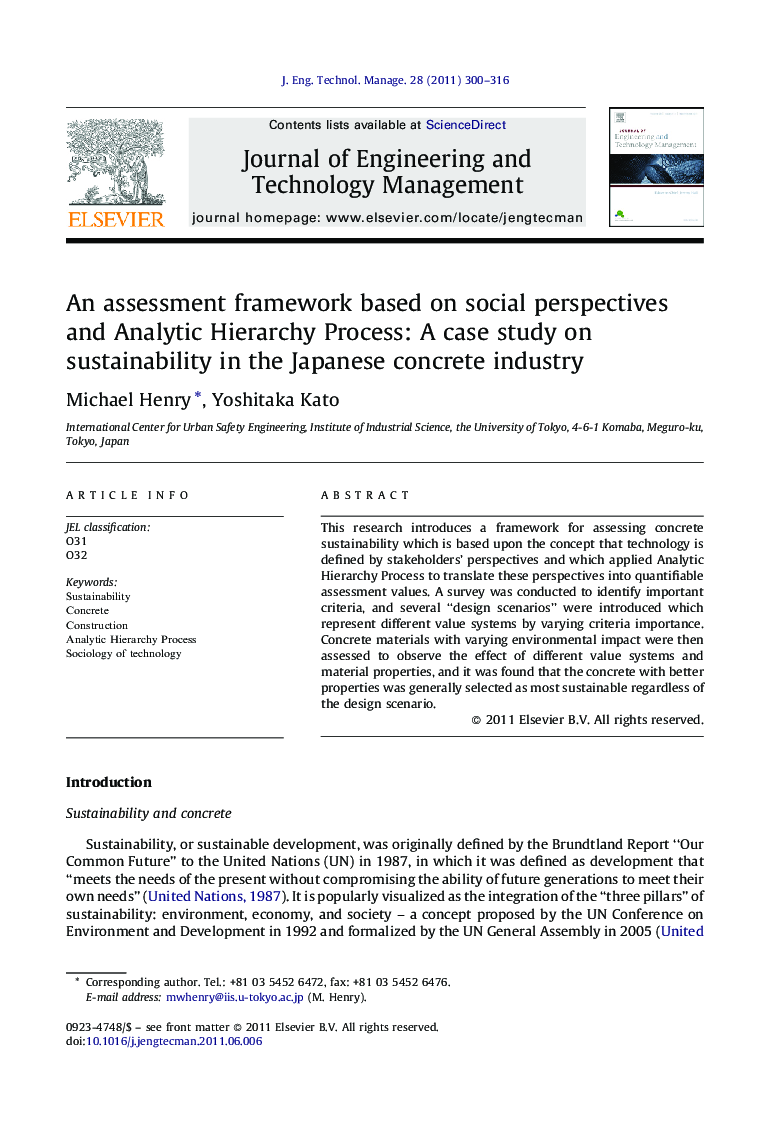| Article ID | Journal | Published Year | Pages | File Type |
|---|---|---|---|---|
| 1006452 | Journal of Engineering and Technology Management | 2011 | 17 Pages |
Abstract
This research introduces a framework for assessing concrete sustainability which is based upon the concept that technology is defined by stakeholders’ perspectives and which applied Analytic Hierarchy Process to translate these perspectives into quantifiable assessment values. A survey was conducted to identify important criteria, and several “design scenarios” were introduced which represent different value systems by varying criteria importance. Concrete materials with varying environmental impact were then assessed to observe the effect of different value systems and material properties, and it was found that the concrete with better properties was generally selected as most sustainable regardless of the design scenario.
Related Topics
Social Sciences and Humanities
Business, Management and Accounting
Accounting
Authors
Michael Henry, Yoshitaka Kato,
